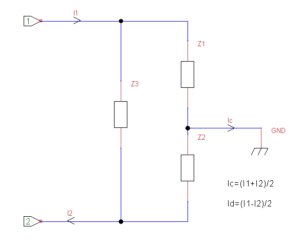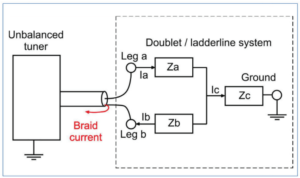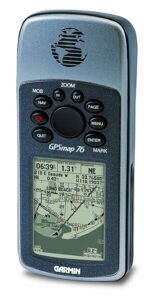I planned this article to be a Youtube video, but recent behaviors of Google / Youtube give me pause to consider whether or how I use Youtube in the future. So, this article is a simpler presentation of the underlying concepts.
For most purposes, users of HF antennas would like the feed line to perform that function alone, ie to not participate as radiating or pickup conductors.
For that end, we want the common mode component of feed line current to be very very low.
Discussion of antennas tends to represent them as two terminal devices in free space, ie ignoring the presence of ground in close proximity. This applies whether the feed line is coax or two wire line.

A more complete representation (or model) is a three terminal network that includes a terminal to permit current to flow to ground. Above is a Wye or Delta equivalent circuit, and that can be transformed to an equivalent Tee circuit. Continue reading Voltage baluns are making a comeback for HF antennas?
Last update: 8th December, 2023, 2:37 PM


